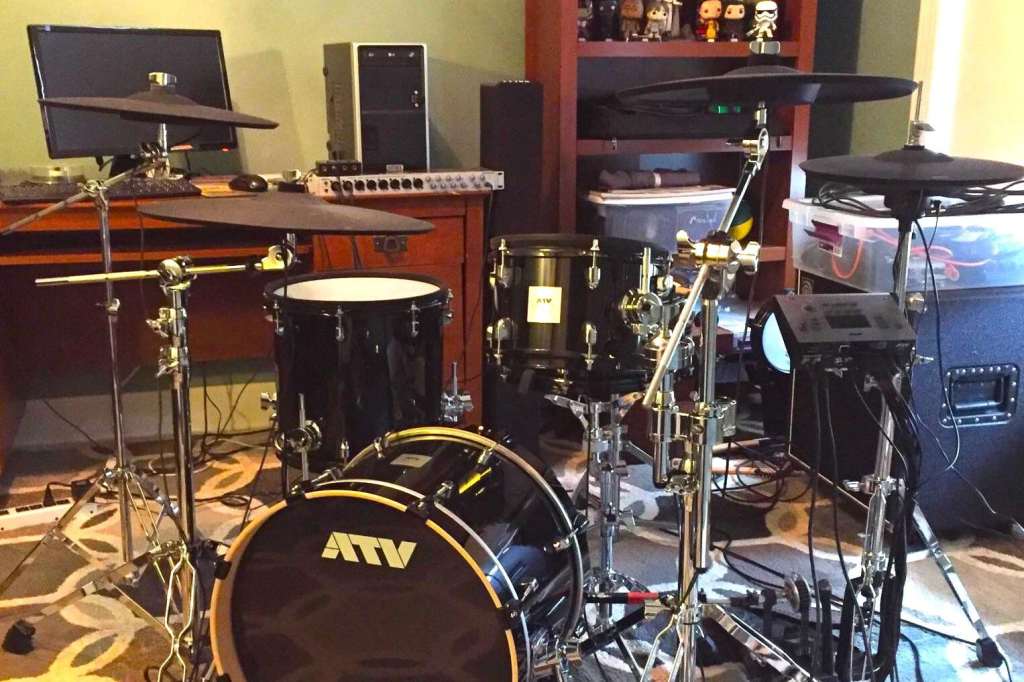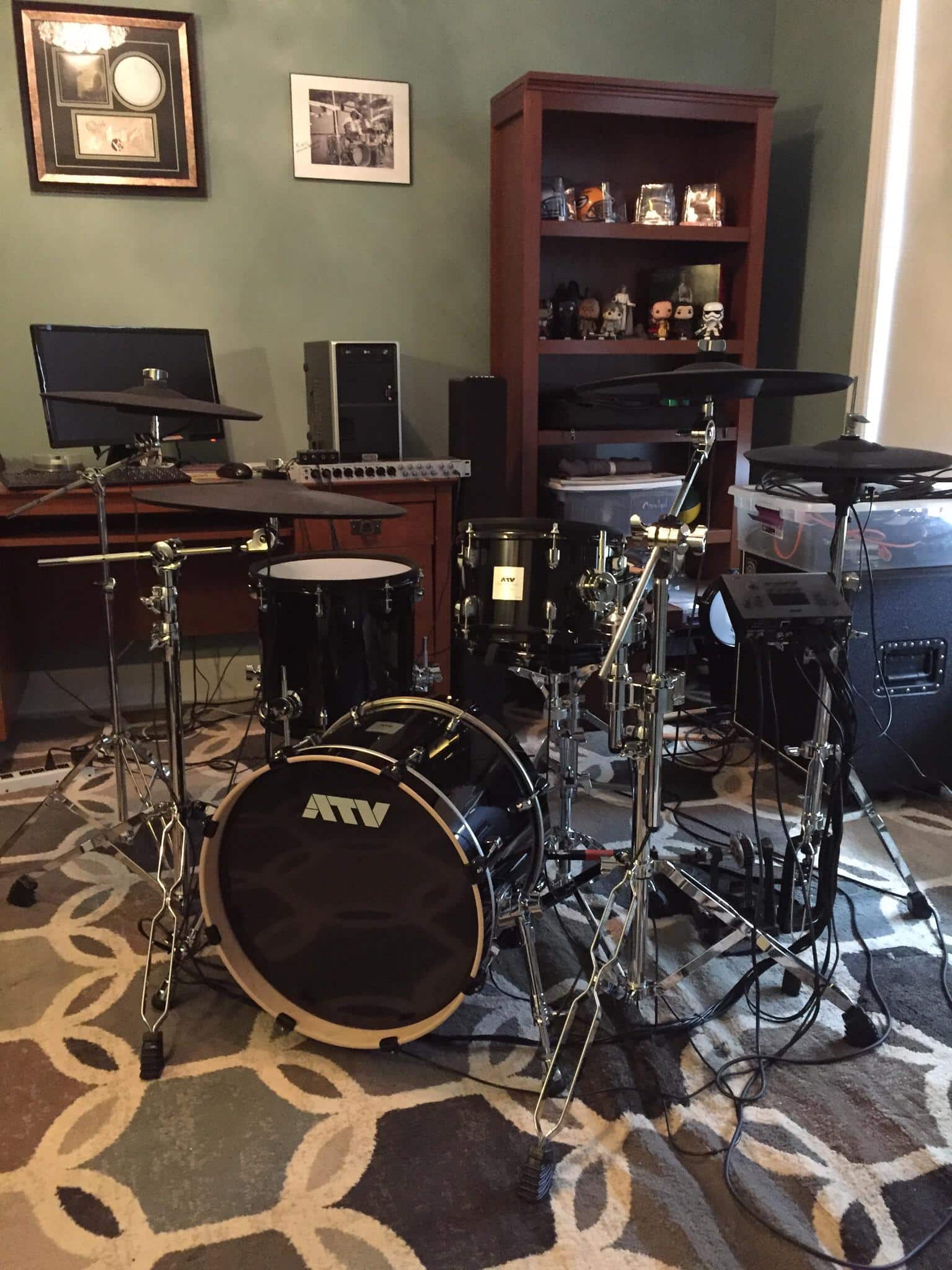Quarantine Home Recording: Don’t Say “Can’t”

By Michael Molenda, Modern Drummer Chief Digital Editor

If the pandemic has taught creative artists anything other than, well, truly horrible and depressing stuff, it’s that spending the time to improve and expand your craft during lockdown is an essential activity. Do nothing, and nothing will come from nothing. Duh.
So for musicians currently denied the option to perform live, getting their home-recording chops together in order to release new material and keep their audiences engaged is definitely a career-survival tactic.
That said, when I talk to musicians who RESIST digging into the self-sufficient glories of homegrown recording and production, the following “can’t-do-it” objections tend to creep up all the time (sigh): Advertisement
Obstacle: I can’t afford a DAW.
Solution: Um, you do know that Macs and PCs offer free multitrack recording software, don’t you? Try GarageBand (Mac) or Audacity (PC/Mac) for starters. Getting a mic and/or instrument input into your computer is the next step, of course, but some very useable audio interfaces start at less than $100 (Google it). The investment vs. return here is going to be mammoth for your creative diversity and musical independence.
Obstacle: I can’t learn this stuff.
Solution: Oh, I disagree. Learning curves are part of life, and digging into recording software is not all that scary. Do a little online research on basic recording techniques, and let the software’s Help function guide you through anything uncomfortable. Remember: The goal is not to become a brilliant, world-renowned recording engineer. The goal is to get sounds into your computer. You can do this!
Obstacle: My home is not conducive to being a recording studio.
Solution: Sure it is. Do you practice your drums at home? Well, as that’s likely the loudest element you’ll be dealing with, you’re golden. Most other instruments — guitar, bass, keyboards — can be recorded “direct” without the need for amps and microphones (the recording software typically offers up virtual amps and so on). Advertisement
After owning several professional recording studios throughout the years, I hardly ever jump into one now, and, of course, I can’t just pop into a commercial studio facility at the moment. Why am I not bummed out? Because I really enjoy recording source sounds in my hallway, office, bathroom, kitchen, and even out in the backyard. Whether you’re in a house or an apartment, I’m sure you have some awesome-sounding (or at least interesting sounding) recording spaces at your disposal. You will have to deal with not disturbing house mates and neighbors when you’re working, but, c’mon, home recording is so prevalent now that other musicians have figured out ways to make tracks without risking eviction or angering co-inhabitants.
Obstacle: I don’t know anything about audio engineering.
Solution: Every professional engineer has started his or her career at an “I know practically nothing” level of experience. Diving in is most of the battle. That’s how I started. I began bouncing tracks between two stereo cassette recorders in my bedroom using cheap, crappy Radio Shack microphones. The cool thing about home recording is there is no reason to fear anything, because you can always start over and re-record mistakes and improve hideous sounds. You have unlimited “Do-overs.” (If only life had the same option.)
And here’s a little secret for nervous first-timers: DON’T worry about EQ, compression, advanced mic positioning, and other processing. Simply put your microphone in front of your drums and record them. Same for any acoustic instrument. As long as you record the source sound without audible distortion (watch those virtual recording meters so that you don’t slam your input levels in the red), you can always play with the sound after recording it. (And even if you blow it and distort the crap out of something, there’s that limitless “do over” option.) Advertisement
In fact, recording instruments “flat” (unprocessed) can be a great start. I once worked with a platinum-selling engineer who had recorded a bunch of superstar artists, and I was thrilled to have an opportunity to “steal licks” from him. Imagine my surprise when he simply dropped a mic in front of a horn section, walked into the studio control room, and pressed Record without futzing with tone controls, outboard processors, or anything else. Sometimes, doing almost nothing is a brilliant move.
Objection: I don’t have a bunch of fancy microphones.
Solution: At my studios, I had very nice collections of sexy microphones. I loved that. REALLY loved that. But at home, I use an inexpensive M-Audio Solaris large-diaphragm mic for everything. I park it in front of my drums — just one mic — and I get enough kick, snare, toms, hi-hats, and cymbals to produce a compelling drum track. Would I prefer multiple mics to record each drum and overhead perspective separately? Yeah! But home-recording is often about making limitations work beautifully, and I have no beef with the one-cheap-mic approach.
And here’s something else to think about: Throughout my career as a journalist and studio owner, I’ve heard countless musicians tell me they can’t produce work in their home studios because they don’t have this or that, or don’t have the super-awesome piece of outboard gear (or software) that will transform their compositions into smash hits. What I hear is this: “I’m not producing work. I have nothing to share. I am invisible.” Advertisement
Don’t be that musician who lets GEAR get in the way of recording your music. Tangible assets — your products, your art, your tracks — are the life’s blood of successful creators. “Plans” and “Intentions” that no one else can hear are meaningless nothings that keep you from engaging an audience.
MAIN TAKEAWAY: If you have compositions or songs that you believe in, and you want to get them out into the world, but you don’t have a big studio, a great engineer, or an accomplished engineer/producer available to do the work, RECORD THEM YOURSELF IN YOUR HOME AND GET THE MUSIC OUT THERE! You owe it to your creativity not to let your music “disappear” during the pandemic.
NEXT UP: Miking Source Sounds Without Fear


